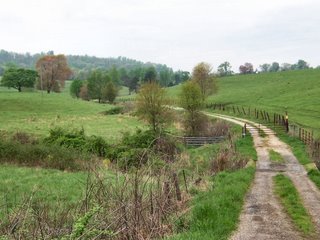Part III – Isolation and Outside Influences
In Appalachia, the isolation of living among the mountains made communication difficult, although the region was never completely cut off from contact with the outside world. Trade with nearby valley communities and seasonal work east to the lowlands, the delivery of letters and periodicals and visits to the hollow communities by peddlers and politicians kept mountain residents informed of issues and events through the awakening new country.
These outside influences brought new ideas, new technologies, and new items of material interest into the mountains and these new things were melded into the prevailing culture. However, outside influences during the pre-industrial period transpired on the settlers own terms and had minor influence on the quality and bearing of mountain life.
The relative seclusion of mountain neighborhoods from the changes that were sweeping life in urban America provided a sense of security and continuity which sustained a regional culture based upon strong relationships to land and family.
Each community occupied a separate cove, hollow or valley and was separated from its neighbors by mountains or ridges. Land ownership patterns usually terminated at the ridge top, reinforcing the community's identity and independence.This dispersion of settlement and land ownership patterns which evolved in the mountains during the nineteenth century served to minimize the establishment of larger organized communities and formal social institutions.
Politics and religion were the two major opportunities for mountain residents to engage in organized community life, but these institutions were themselves organized along kinship lines. Local political factions divided according to kin groups, and local churches developed as communions of extended family units and each of these institutions reflected the importance of personal relationships and local autonomy in their operation and structure.
Read Part I - Starting a New Life
Read Part II – Family and Hard Work

No comments:
Post a Comment